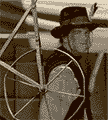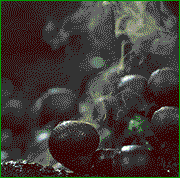|
Arsenic Lupin posted:Rent-a-goat! Which is an actual business (set of businesses) in my area, usually used to mow steep slopes. Goats are evolved to prefer broadleaf. Thats why they are shaped different from sheep. Goats naturally prefer to eat up, and sheep, with thick necks like to eat down, and whats down is grass. So my problem with using goats to mow, you need a lot of them. A lot alot alot of them. I have 30-45 of them at any given moment, they couldnít clear or keep a 4 acre pasture open. I would say to do what these businesses do, they probably stock 100-150 an acre but then there is problem two: goats prefer broadleaf. They are highly selective and only like to eat what tastes best. And thats what they do unless you start to starve them a little. So basically the strategy to clear is to pack them in tight and wait until they get really hungry. And at that point, they will eat dumb poo poo like yew, snakeroot, wilting cherry leaves or a plethora of other things that might just make them really sick or die or probably just go blind from b vitamin deficiency if you didnít catch it and treat it in time. And not to mention the physical damage from hooves, chewing and curiosity. So me personally I will take a bush hog and a sprayer. If its that steep where a tractor canít mow then grass probably isnít going to keep the hillside intact and it should go back to trees.
|
|
|
|

|
| # ? May 7, 2024 16:36 |
|
MetaJew posted:You're right about the price. I recall reading that their habiturf seed was quite expensive relative to other grass seed and it seems like if you screw up the seeding process you might just be throwing money down the drain. I have read about zoysia being okay in this climate, and I know you can get it as sod, but for how large my back yard is I think that cost to plant it and keep it watered would be prohibitive. I do like that it apparently doesn't require much mowing once established, though. With Zoysia you can do plugs instead of sod - you basically plant them every X feet apart, and they'll spread out to form a lawn. https://www1.zoysiafarms.com/ordernow.jsp Can't say I've done it yet - my front yard had zoysia when I bought the house, and we're planning on putting more in once we get the back yard graded properly.
|
|
|
|
devicenull posted:With Zoysia you can do plugs instead of sod - you basically plant them every X feet apart, and they'll spread out to form a lawn. I do not like zoysia because it goes brown super early and stay that way in my climate zone, but I get it further south. FYI, you can pull plugs from your front yard to do the back. There are hand tools for that which make it easy.
|
|
|
|
My understanding is that zoysia needs more water then Bermuda while itís growing, caveat being that since itís dormant longer itíll use less overall. Personally so long as theyíre not tied to a native grass, and willing to irrigate. Iíd stick with Bermuda. Itíll go gangbusters with basic care in Central Texas if itís got sun.
|
|
|
|
rdb posted:[useful info snipped] Now I am sad. On a Friday morning. You monster.
|
|
|
|
I overseeded with tall fescue about two weeks ago and it's coming in pretty well all over the lawn, but there's some spots where it doesn't seem to have taken hold. Looks like it's in areas where the thatch was thicker than the rest of the lawn. Should I just let the existing tall fescue grow and fill those spots in in the spring, or should I try to buy another bag of seed and retarget those areas in particular? I likely have at least a month before we'll hit a first full frost (and probably more, if recent winters are any indication).
|
|
|
|
Is it worth the effort it would take to relocate these trees if they're in my way, or should I just cut them down and plant more elsewhere?
|
|
|
|
I canít tell what species they are. My answer would depend on that but most likely cut them down.
|
|
|
|
Trees of that size aren't cheap. If you want something like those elsewhere it's probably worth talking to the local tree nursery to see what it would cost to get them to come out there with their tree spade truck to move them for you.
|
|
|
|
Motronic posted:Trees of that size aren't cheap. If you want something like those elsewhere it's probably worth talking to the local tree nursery to see what it would cost to get them to come out there with their tree spade truck to move them for you. For real. Unless they're something you definitely don't want (can't tell what they are from the photo) trees that size start at $800 a piece before delivery/planting/etc around here for all but the fastest growing species. If they were planted within the last couple of years and haven't spread out a ton I've had good success moving trees about that big (though I wouldn't try anything bigger) with a shovel and some manual labor, but if they've been there longer than that you're going to want someone with equipment to get involved. Wallet fucked around with this message at 23:47 on Oct 12, 2021 |
|
|
|
I know they're quite pricey when they're this size, which is why I thought to ask. I've also got no clue what species they are. I'll give a local nursery a ring and see what they say.
|
|
|
|
The Wonder Weapon posted:I know they're quite pricey when they're this size, which is why I thought to ask. I've also got no clue what species they are. Post closeups of the leaves, we'll figure it out.
|
|
|
|
The Wonder Weapon posted:I know they're quite pricey when they're this size, which is why I thought to ask. I've also got no clue what species they are. Moving them can be an option which may or may not be a)economical or b) successful. To help make it successful, the trees will need pretty good care for a year or two afterwards (watering, mostly), and they probably won't grow much at all in that time as they recover from being transplanted. Depending on species, with good soil and aggressive fertilization/watering, you could grow a $30 3-gallon tree up to that size in ~5 years around here, and it will probably be a healthier, happier tree long-term. I know an arborist here who makes alot of money moving fairly large trees and says if you plant a 10 gallon ~1.5" caliper tree and a 3" caliper dug tree, in 10 years you won't be able to tell the difference because the bigger tree gets slowed down so much more by transplant shock. But you can get a big tree, where you want it, Tomorrow, and that's worth a lot.
|
|
|
|
Kaiser Schnitzel posted:Post good pictures of the leaves and bark and we can ID the species. This reminds me that I need to get some of my (formerly) small japanese maples out of pots and into the ground once they go dormant.
|
|
|
|
Insurrectum posted:I overseeded with tall fescue about two weeks ago and it's coming in pretty well all over the lawn, but there's some spots where it doesn't seem to have taken hold. Looks like it's in areas where the thatch was thicker than the rest of the lawn. Should I just let the existing tall fescue grow and fill those spots in in the spring, or should I try to buy another bag of seed and retarget those areas in particular? I likely have at least a month before we'll hit a first full frost (and probably more, if recent winters are any indication). Mowed the lawn for the first time in a couple weeks after overseeding and it looks much better than it did in the spring! The tall fescue's color and texture really enhances the lawn. I bought another bag of seed and manually tore out some of the denser areas of thatch and spread some seed around the areas where it didn't take. Looks like some of the non-growth was due to a layer of moss covering the topsoil in parts of the yard, but I'll take care of that next year. Now just hoping we don't have a cold spell for the next two or three weeks.
|
|
|
|
Is there a goon approved/recommended landscaping planner? Free would be nice, but I'm willing to pay a bit if needed. I'm planning on completely redoing the backyard including adding a garage and I want to see what works best before I start ripping poo poo up.
|
|
|
|
I'm interested in this too. My dad used to have a little stencil dealie with shrub and tree cutouts for drawing up a landscaping plan, but I'm like, lazy. I want to turn my backyard into a jungle
|
|
|
|
Pencil and paper never fails, plus it's cheap if you have materials. Get a couple of books of native species for your region and pick some plants you like, there will be pictures and some size data. You'll want to space things based roughly on their full grown diameters so your beds won't be crowded next year when things grow in. You can trace your garden from Google Earth satellite imagery using a $3 roll of trace paper from the art store. NB pick a reasonable scale like 1"=10', depending on the size of your bed, this will make it easier when you're spacing your plants Go hog wild with colored pencils or markers or whatever, have a blast. Maybe there's an app that does this, but everyone I know does this stuff by hand. E: in my experience, any app is going to be limited in a few ways. Plant pallets are going to be small and not encompass the range of what's available in your region, modeling will be wonky and you'll spend way more time figuring it out than just drawing, . Leon Sumbitches fucked around with this message at 11:55 on Oct 22, 2021 |
|
|
|
A couple years ago my wife was given (what we were told was) a baby kahikatea as a gift, it was like 10-15cm. I guess it was sort of a joke gift and we both expected to botch it's care to the point it would be dead before it got big enough for us to worry about. Well, we somehow managed to not kill it and it's now over 2 metres tall, surviving a pot transfer. So now we have this just over 2m native kiwi tree in a pot on our deck. We can't plant it on our land because there isn't anywhere really suitable for a tree like this when it's full grown. We are sort of attached to it now but don't really want it to get any bigger, but I've also read that topping it would be an enourmous sin and has the potential to kill it, so looking for advice to keep it at a manageable size if that's possible? I guess if that's not possible/recommended then we can potentially find a home for it somwhere more suitable...
|
|
|
|
Leon Sumbitches posted:Pencil and paper never fails, plus it's cheap if you have materials.
|
|
|
|
Okay, couple things about home garden planning. A key thing to note is that the plan you want to create needs to be precisely to scale, so you know everything will fit in the space as it is shown on the page, but it doesn't have to actually look nice to be perfectly workable for your purposes. It is a functional drawing, not an artistic one, so just be careful that everything's to scale, and don't worry at all about what things actually look like. The majority of commercial landscape design (including things like laying out plants in a home garden, if done in a Landscape Architecture office) is going to happen in AutoCAD. Things are represented in a top down view, with trees and shrubs usually represented by a simple circle of appropriate size for each plant. You would prepare a list of each type of plant you want to use in your design ahead of time, along with its rough mature size (the word you want to search for is "spread," which would be diameter). AutoCAD is very good at facilitating this activity because you can literally instruct the program to draw a circle of exactly the size you want in exactly the place you want. More artistic drawings in plan view can be accomplished in much the same way, ie. by making (or in most cases grabbing a preexisting drawing element) say, a circular branching tree symbol and simply scaling it to the appropriate size before placing it in the drawing. Everything is done in the program at "full scale," then when the drawing is complete you have a separate interface to size what you've drawn onto a particular paper size at a specific scale (1"=10' or whatever). AutoCAD is very expensive (although you might be able to access a trial version if you have even a loose university affiliation), not completely intuitive if you haven't used it before, and way overkill for a small scale, one off project. Consider the opportunity cost of learning to use a new program if it isn't something you want to use regularly in the future. I don't know what might be available in the apple range of software (there are tons and tons of drawing and sketching programs out there), but for something you might already have on a pc, PowerPoint could be a very crude way to go about this? You can use the preexisting shape pallet for circles, rectangles, and so on. You would probably decide on a scale ahead of time and draw in scale since ppt defaults to something like a 10x7.5" slide. It could get you across the goal line if you definitely want to do this electronically using something probably already on your computer. I wouldn't really recommend doing it this way, but it is an option. I would still try to grab a Google earth screenshot to use as a base rather than attempt to draw a house outline and driveway from scratch. You probably want to at least consider doing a hybrid approach. Is your house/driveway at least 5 years old and relatively visible from above (ie. no huge trees blocking your yard from aerial view)? If so, congratulations, the hard part of your drawing plan can be quickly accomplished by taking a screenshot using Google earth. There is an option for displaying a graphic scale in the bottom corner of your screenshot. You could then print this out with an image size/zoom level selected carefully to give you a whole number scale (the 1"=10' mentioned before, maybe 1"=20' if you have a big place or 1"=4' for a planting bed detail or something). Pick up a circle template and you can now draw very pretty circles to represent plants of all sizes you might reasonably want on top of your aerial photo (maybe make this black and white before printing). This is the much less expensive option and doesn't require any drawing skills, you're just using the template. A brief search found this online tool that seems to have stylized icons for all your different garden elements, but I bet getting your specific house layout put in as a starting point would still represent a pretty big time investment. Not sure about how accurate you would be able to get everything in terms of scale as well: https://my-garden.gardena.com/uk Some design thoughts to consider: - unless you are going for a very specific (modern/geometric) style, avoid straight lines for planting bed edges (and everything else too); use gentle curves instead. - make the big moves first, so first draw any trees and planting bed outlines, then large shrubs, then small shrubs, and decorative grasses/perennial/annual clumps at the end - odd numbers of plants often look more "natural" then even numbers, so try for groups of 3 or 5 rather than 2 or 4 - in almost direct contradiction to the point above, it can look nice to have one focal point plant in each clump or area (either something larger or showier), so one dwarf Japanese maple with three boxwoods (common small evergreen shrub) around it would meet both criteria - don't plant in straight lines at even intervals. If one of your plants doesn't grow as well or dies, the gap will be super obvious and distracting. It would be better to make a staggered row (think a flattened "w" for an example group of 5 plants), and I would break the 7 shrubs into a group of 3 and a group of 4 with a little extra space between the two groups. - annuals and perennials are usually best planted in masses, so rather than drawing individual circles you can just draw a blob (or kidney bean shape, if you want to be fancy) of the size you want. Then figure out roughly how much area the blob represents (your drawing is to scale, right?), divide by the mature size of the annual/perennial, and you know how many to buy (get a couple extra because you can always rearrange to fit an extra plant or two in but if you don't get enough and it looks sparse there isn't as much you can do). Plant them in the same staggered rows we discussed before (triangular or "w" arrangement rather than straight rows like a six-pack of beverage cans) Legendary Ptarmigan fucked around with this message at 02:51 on Oct 23, 2021 |
|
|
|
The thing I have a hard time visualizing is the look of the garden from the side, not the top. I don't have any problem with "space the peonies three feet on center"; it's "if I put the peonies in front of the penstemon, will they be blocked from view?"
|
|
|
|
Isn't a drawing sort of a roundabout way to answer that question? For the drawing to answer that it needs to be to the correct scale, and to make a correctly scaled drawing you would need to know the expected height for each plant. At that point...just compare them? I include both typical height range and spread range (along with a bunch of other stuff that might be relevant like preferred growing conditions/moisture levels, bloom time and color, ect.) in my big plant table before I start drawing the planting plan so I can answer those kinds of questions on the fly. Usually I do that in excel and sort it into sections of trees, shrubs, and perennials/grasses/groundcovers, then sort within the sections by height so I can quickly find what I want to pull from the list. I can see wanting to get a preview of what things will look like in your space, and when compared to each other, but elevation drawings are a whole other kettle of fish. Digitally speaking, you're probably in Adobe photoshop or illustrator territory, possibly integrated with autocad or another modeling program to setup correct scale or perspective views more easily. I don't know of repositories of scaled elevation views of various plants that you could just drop down and compare to one another. I know you've mentioned being disinclined towards pencil drawing but maybe if you had a list of the plant heights you could get some graph paper and use that to size things correctly when doing some very loose sketching? I think the stuff is even sold as 4 squares/inch or whatever and that's perfect for a scale of 1"=1' to capture 3 or 6" differences in height/spread. Most small stuff is marked as a range to the nearest 3-6" increment up to about three feet, then the intervals get wider as you go. That could give you a very general idea of texture at least. Legendary Ptarmigan fucked around with this message at 03:40 on Oct 23, 2021 |
|
|
|
who has grandmas secret wisteria care guide.pdf for me?
|
|
|
|
|
Like, for me I'm doing a lot with that space. I'm adding a garage, need space to park a trailer, etc. I need to figure out the best configuration for cement, where I'll put greenery and so forth. Can I draw that? Yeah, I guess if I want to erase and redraw it every time I want to change something, or make little paper cutouts and move them around, but that's not efficient and I can't see things in 3D the way you can with software. It's like if someone asks you to recommend a good, modern AAA videogame and the response is "play D&D 4th edition, just draw up your own maps and get dice." Googling "landscape design" and "online" or "software" gets you a bunch of aggregator sites "THE BEST 20 FREE ONLINE LANDSCAPE DESIGN TOOLS" and/or poo poo that's riddled with ads and spyware. I looked on Amazon which you'd think would have something but even that's all either $500 CAD programs or poo poo that looks like shovelware from 1997 and comes on a CD-ROM. My laptop doesn't even have a CD drive. If what I'm looking for is "a program that will let me do layouts in 3D at a reasonable price" and that doesn't actually exist, that sucks but OK. "Just get some graph paper" doesn't...actually answer the question, y'know?
|
|
|
|
SubponticatePoster posted:Like, for me I'm doing a lot with that space. I'm adding a garage, need space to park a trailer, etc. I need to figure out the best configuration for cement, where I'll put greenery and so forth. Can I draw that? Yeah, I guess if I want to erase and redraw it every time I want to change something, or make little paper cutouts and move them around, but that's not efficient and I can't see things in 3D the way you can with software. It's like if someone asks you to recommend a good, modern AAA videogame and the response is "play D&D 4th edition, just draw up your own maps and get dice." As far as where plants go I honestly don't think that requires planning on paper unless you're going for something super formal; the plants won't stay in the little circles you draw for them anyway. But for things where I need all the dimensions even after scouring the internet for better alternatives I've ended up just using TinkerCad (a free very simple 3d program) e.g.: The trellis I kitbashed because no one sold one the right size  the raised bed I built next to the shed  the planter boxes I built for the porch (the real ones are painted I promise)  It's mostly intended for 3d printing and laser cutting and poo poo so you do have to use a converted scale to do larger things in the workspace because it maxes out at 30x30 inches or something like that. TinkerCad isn't the funnest for organic curves so for stuff like planning garden beds and paths I've just used photoshop  Worked well enough for planning out my side yard (which used to be just a lawn) but it's not ideal. Unfortunately unless you want to invest a lot of time in learning to use something like CAD I think that's about as good as it gets, and if you aren't already familiar with a 2d program then paper and pencil might actually be your best option. If you have access to a drone (I don't) using photoshop/paint/whatever to draw over an actual photo is pretty legit for quickly laying things out. Worked well enough for planning out my side yard (which used to be just a lawn) but it's not ideal. Unfortunately unless you want to invest a lot of time in learning to use something like CAD I think that's about as good as it gets, and if you aren't already familiar with a 2d program then paper and pencil might actually be your best option. If you have access to a drone (I don't) using photoshop/paint/whatever to draw over an actual photo is pretty legit for quickly laying things out.    (doing all of those compound curves would have been a pain in the rear end) Arsenic Lupin posted:The thing I have a hard time visualizing is the look of the garden from the side, not the top. I don't have any problem with "space the peonies three feet on center"; it's "if I put the peonies in front of the penstemon, will they be blocked from view?" Even with a 3d program this kind of thing can be a crapshoot, and far as I know none of them are really so well developed for garden planning that you can just type in the name of any plant you want and it's going to auto load all of the appropriate dimensions etc. Depending on condition and environment plants can vary wildly in the height they actually reach and plant labels are rarely accurate in a useful way, particularly for woody plants. Even the best sources I know of for plant growth habits are listing a 2 foot range of expected heights for ex Penstemon digitalis. Personally I just put things in the ground where I think they'll look nice and if it ends up not working out either because they don't like where I put them or I don't like them where I put them I just dig them out and go again. Wallet fucked around with this message at 15:01 on Oct 23, 2021 |
|
|
|
Legendary Ptarmigan posted:AutoCAD stuff Totally not home gardening related, but I work for my government's forestry ministry doing long standing genetic trials and stuff. I'm trying to figure out a better way to map our inventory of planted stock. Our current way is just an excel spreadsheet that's representative of how everything is planted, but a visual accompaniment would be useful, especially if it were to scale. Would AutoCAD be worth looking into for importing datasets and translating strings of numbers into a map? The more I type the more it sounds like a fever dream
|
|
|
|
Bi-la kaifa posted:Totally not home gardening related, but I work for my government's forestry ministry doing long standing genetic trials and stuff. I'm trying to figure out a better way to map our inventory of planted stock. Our current way is just an excel spreadsheet that's representative of how everything is planted, but a visual accompaniment would be useful, especially if it were to scale. Would AutoCAD be worth looking into for importing datasets and translating strings of numbers into a map? The more I type the more it sounds like a fever dream No, if you have coordinate data that also contains some other variable(s) that you want to spatialize, you want some kind of Geographic Information Systems (GIS) program. ArcGIS would be a common industry standard (again, expensive to access and somewhat involved to get started with). QGIS is a free alternative you might look into. There is lots of tutorial information available, but it will still be somewhat of a steep learning curve before you can get going. Depending on the amount of time and effort you can invest, it may be worth it because taking tabular data associated with spatial coordinates is exactly what this kind of program is designed to do. There may be a government GIS office (under the forest service umbrella or one-two organizational "rungs" above that) who you could coordinate with to get them to do some of the actual legwork or at least get you started. I imagine you are dealing with areas many acres in size if you are associated with a forest service? ArcGIS might be overkill if you are dealing with something under an acre but once you get bigger than that it (or another GIS program) is the way to go. Legendary Ptarmigan fucked around with this message at 18:21 on Oct 23, 2021 |
|
|
|
Ah! Thank you! That's valuable information and will hopefully be worth the government's time and money to streamline. (The government's time is always worth spending) Our site is very large. ~100 maps spread out over 500 acres. I know the techs doing the offsite fieldwork use GIS for mapping but I think it hasn't made its way onsite for inventorying because of its entry barriers for staff that a re just used to using Excel. I think I'll try to make a good case for some training Bi-la kaifa fucked around with this message at 18:29 on Oct 23, 2021 |
|
|
|
I'd like to replace my lawn with clover so I don't have to mow it but I've got zero experience landscaping. Any tips?
|
|
|
|
NotNut posted:I'd like to replace my lawn with clover so I don't have to mow it but I've got zero experience landscaping. Any tips? How much lawn are we talking about? In general, I'd find a good local landscape supply and find the right seed, get the right starting fertilizer and whatever you need to spread them (depends on size). I would burn down the existing lawn (chemically) with glyphosate and, depending on how thick it is/size deal with it in "some way". This could be a soil finisher/pulverizer. Or maybe that's not something you can easily get/it's much smaller and you can rake it out. Or skip that and slit seed the clover. And then you probably need straw on it, or something else to hold moisture while it germinates. And a way to water it twice a day for a week, then daily for a few weeks, etc....... Lots of this depends on how big/what kind of soil/climate. I wouldn't do that here in eastern PA this time of year. It's just a bit too late.....Id' want to be planting like a week or two ago, which means you would have needed to have sprayed at least 2 week before that.
|
|
|
|
The Saucer Hovers posted:who has grandmas secret wisteria care guide.pdf for me? Where do you live, and what's the soil like? Ideally https://garden.org/nga/zipzone/ USDA or https://www.sunsetwesterngardencollection.com/climate-zones Sunset climate zones in the US. If you're in the West, Sunset zones are much, much more helpful because USDA zones are based solely on the average minimum winter temperature.
|
|
|
|
Sunset Zone 6 I think- urban Portland. its a very old plant, grown along my east facing porch (yes, yell at me, tell me how sinful) but its also grown all the way up an adjacent tree so there are leaves getting light from a lot of directions up there. i can take pictures if thats helpful
|
|
|
|
|
Aha! Well, the important thing to know is that it blooms on last year's wood, so you should not prune it before it blooms. After it blooms, you're going to have to be pruning hard all summer, but be sure to keep some of this year's new growth so that you get blooms next year. In my experience, in the right climate (which sounds like you've got), the problem with wisteria is to keep it from growing over your house, your car, your dog, and the telephone wires. What do you want fixed?
|
|
|
|
The other thing to remember about garden planning is that youíre talking about a multi-year project. Pace yourself! So sure, have a general idea of what you want to do and see but if you treat this as some sort of min-maxing exercise youíre going to stress out over something thatís supposed to be fun and youíre going to burn out. Not to mention spend a ton of money. So year one or so, figure out what you have, and maybe put in a few trees. Look at your local nurseries and find the ones with a large variety of the sorts of things you like (yes, I have a place where I get 90% of my Acer palmatum/shirasawanum/circinatum), has knowledgeable staff and maybe even has classes. Start learning when your frost dates are and what your local microclimate is like. Maybe do some casual soil testing so you know what to look out for. Check out the master gardening programs from your local agricultural schools. Then, start filling in. Start clearing out and extending beds. Find poo poo you like, be willing to wander around a nursery or seed website and discover some new poo poo. You arenít going to know everything thatís available if you sit down to make a hard plan before the first hole is dug. I would have never discovered dahlias or all sorts of other fun poo poo had I not been willing to just look around. Each year afterwards, build on what youíve learned, what worked, replace what didnít and keep going. Iíve been at my house three years now and each year the results are so much better than the previous year.
|
|
|
Arsenic Lupin posted:What do you want fixed? nothings broken so i take your point. i just love it and want it to eventually envelop my bones.
|
|
|
|
|
The Saucer Hovers posted:nothings broken so i take your point. i just love it and want it to eventually envelop my bones.
|
|
|
|
The Saucer Hovers posted:nothings broken so i take your point. i just love it and want it to eventually envelop my bones. The only thing that might be broken in the future is any wood/iron the wisteria happens to wrap around. My dad had a two-hundred y.o. house with iron lattice work that had been completely malformed by the vine. Truly impressive strength.
|
|
|
|
Iíve got a question that I suppose is mainly around tools/equipment. My property is an acre or so, in a climate that gets very little precipitation in the summer. Fire danger and all that means for defensible space, among other things, Iím supposed to keep dry grasses within 100í of structures to 4Ē or less after July 1st. Iím in a sort of holding pattern around long term plans for my house and doing any major landscaping, but in the meantime I have a decent expanse of very sparse dry grasses and weeds in the summer and fall. I have a string trimmer and a self propelled walk behind 22Ē mower. Using the string trimmer for that size area to keep things down kinda sucks, and Iím fine with using the push mower except that it gets very dry and dusty and that doesnít seem like itís very good for it. I could probably keep ahead of it if I just trimmed a little bit of it once a week with the trimmer, but wanted to see if other folks had any other suggestions for good ways to easily keep the grasses down. I donít want to get into watering it at this point to actually establish a grass lawn, for a variety of reasons, but Iím open to any other alternatives. Hereís kinda what most of it looks like (photos conveniently taken during peak horrible smoke season)  
|
|
|
|

|
| # ? May 7, 2024 16:36 |
|
Get a wider push mower and a mask. There's no real trick here.....it's gonna suck, but that's how it goes. Oh wait.....there is a trick now.....one of the Husqvarna robot mowers. They look pretty awesome. And longer term, get in touch with your county ag extension and figure out appropriate natives you can plant there that will be maintenance free.
|
|
|
































